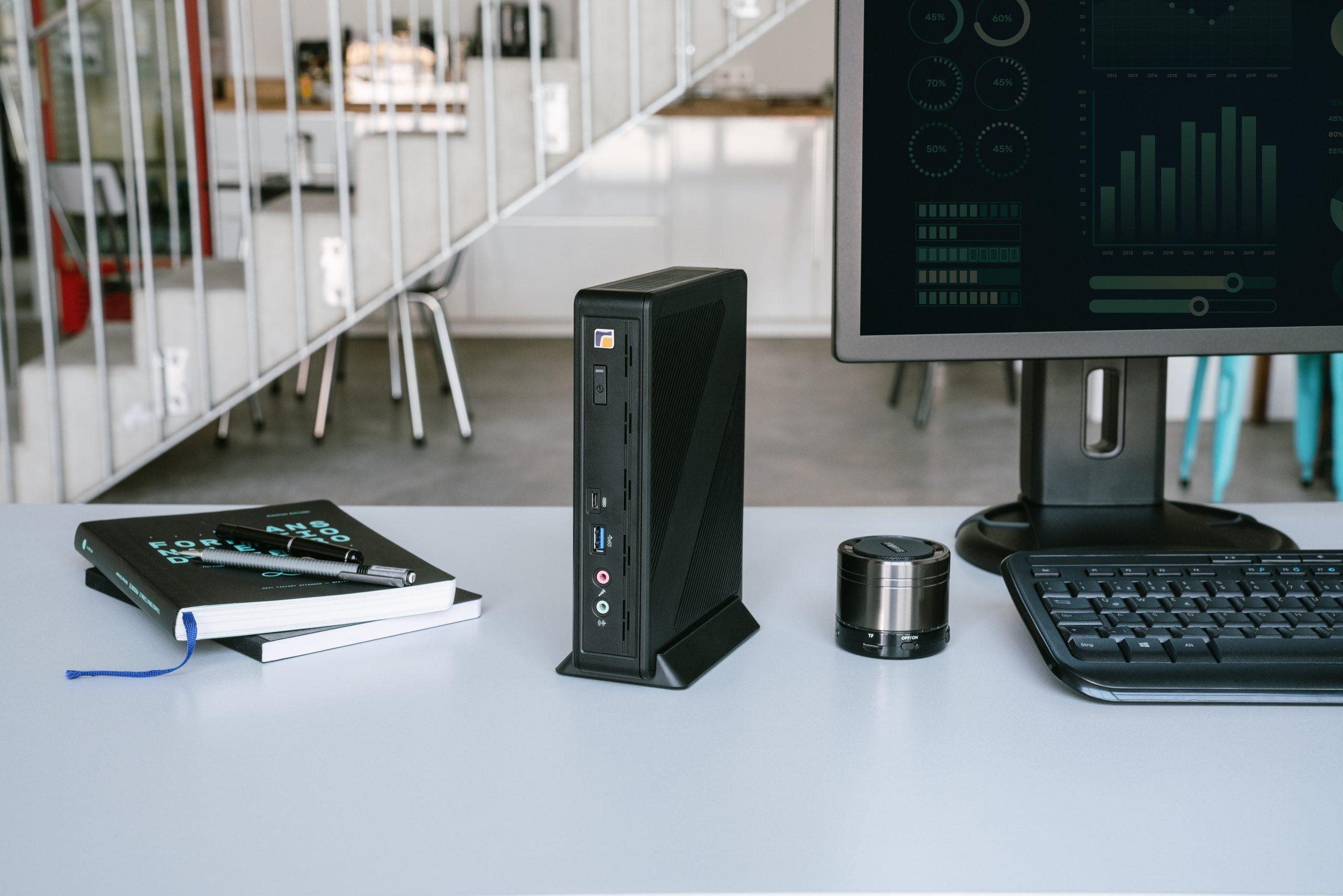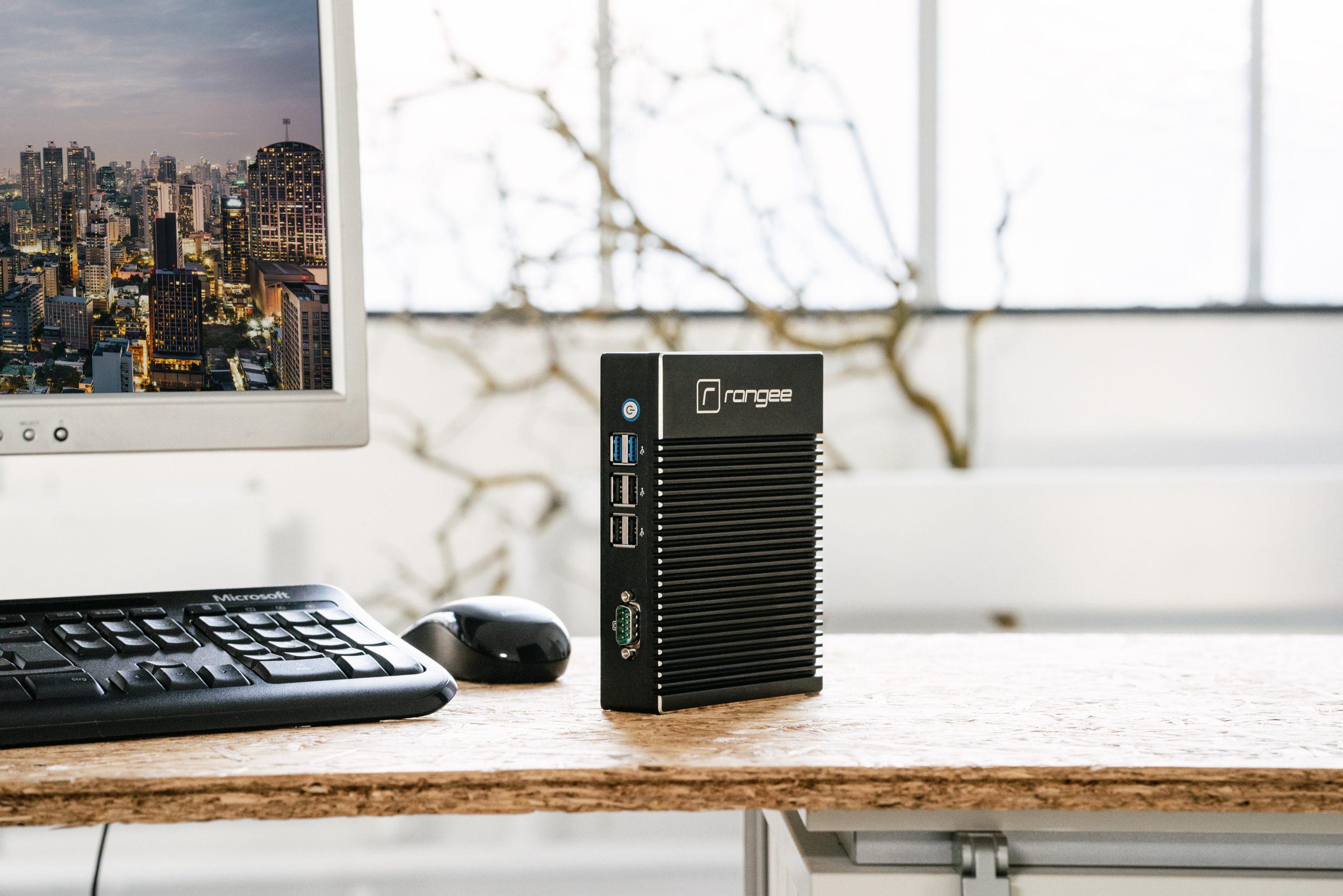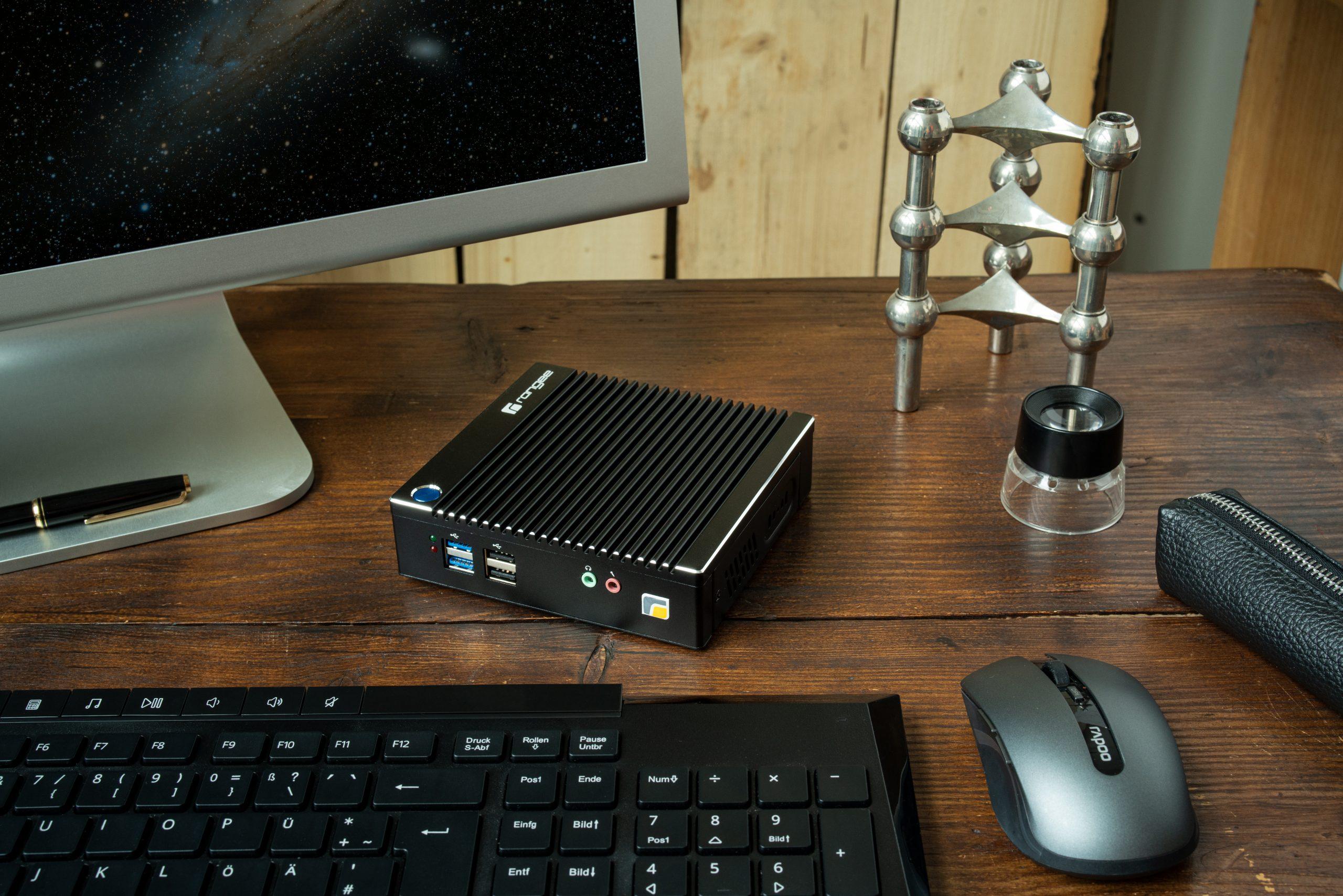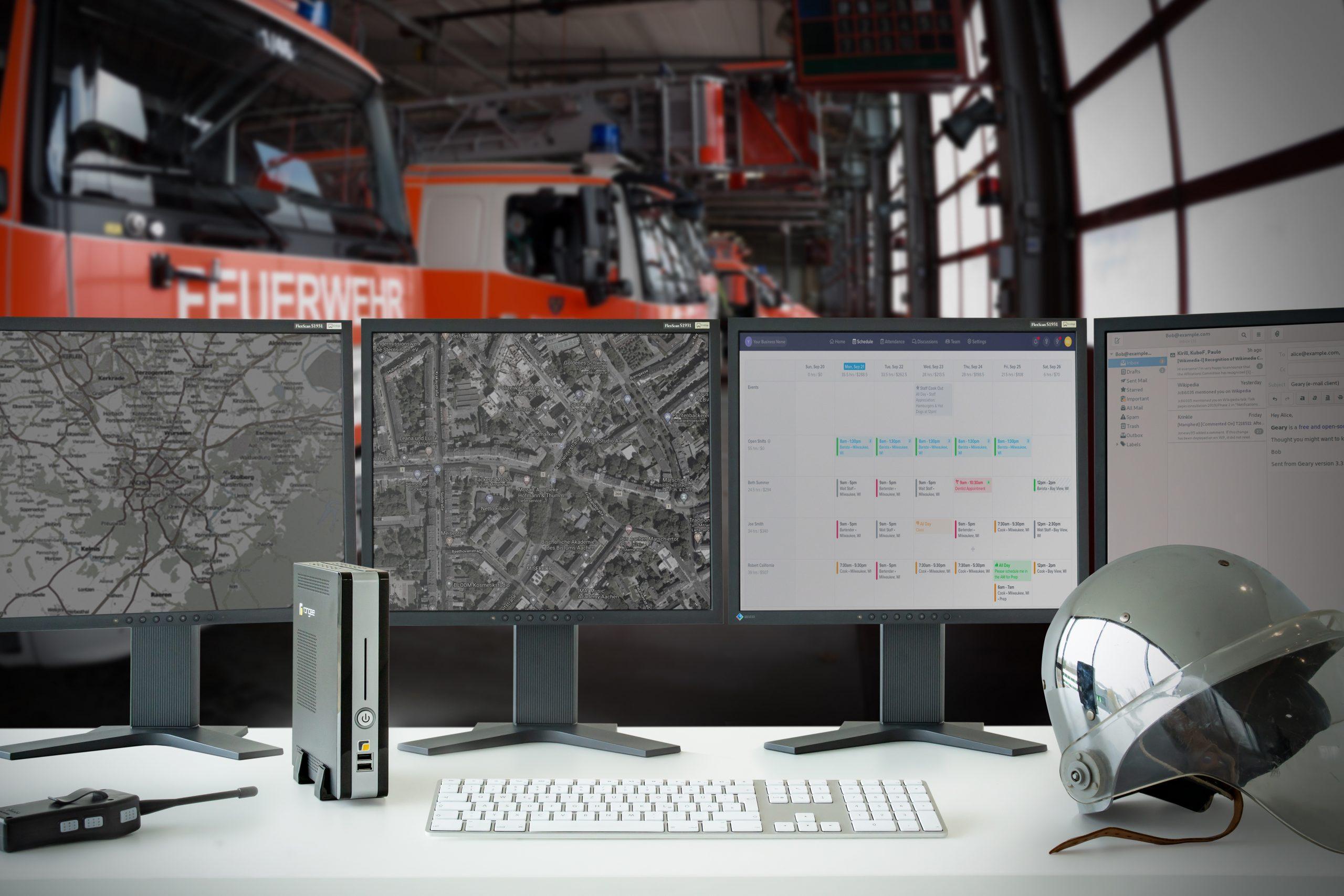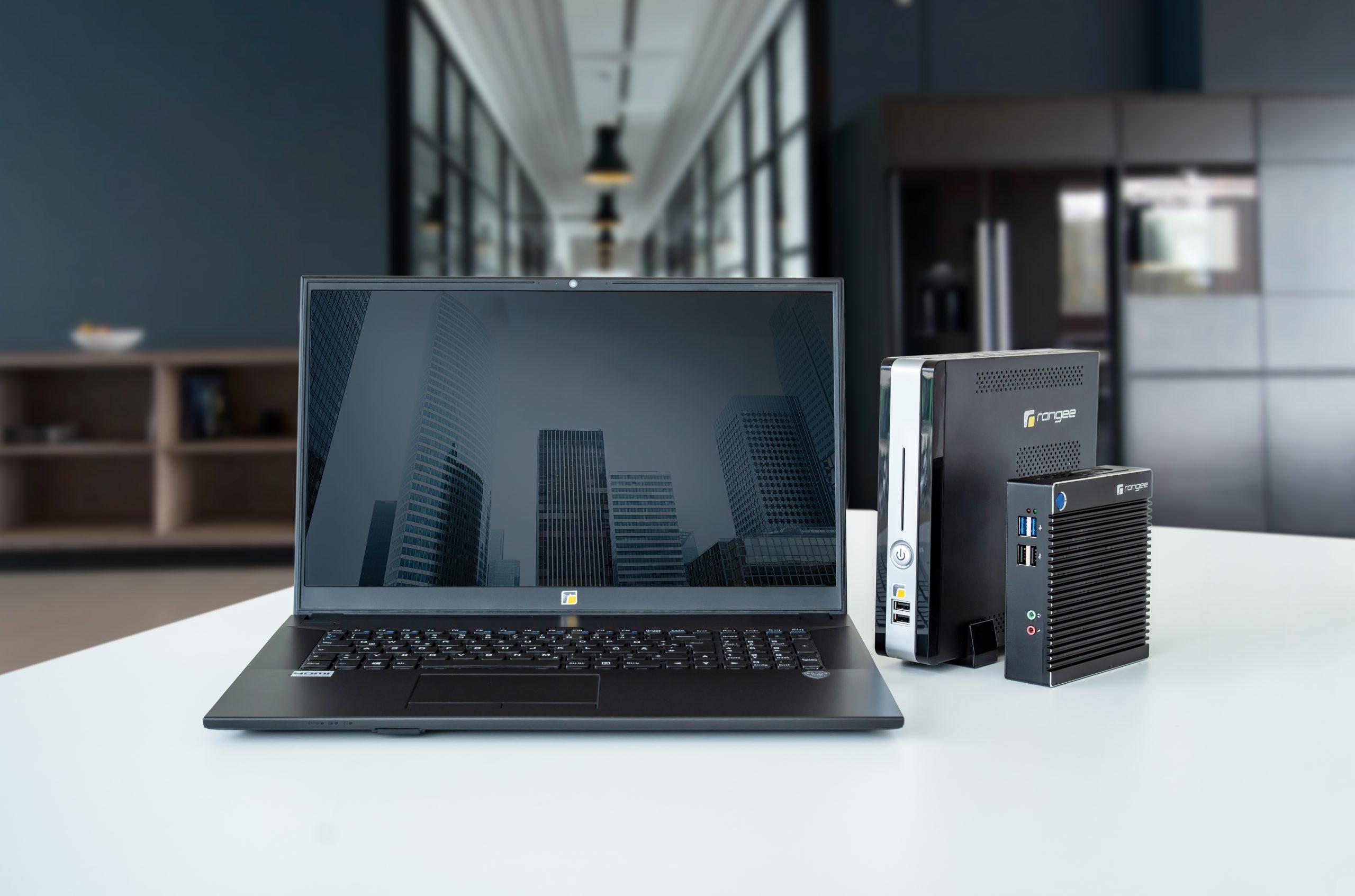What are Thin Clients?
You are new to Thin Client infrastructure, you have been recommended to change your hardware equipment to Thin Clients or you simply want to find out about alternatives to the classic desktop PCs, then you have come to the right place. Here we would like to give you an understanding of what Thin Clients are and what they can offer you.
In a nutshell, Thin Clients are small and inexpensive computers that connect the workstation with the work environment hosted on a server and thus enable work. However, various features and advantages are lost in this summary, so we would like to describe the topic of "Thin Client" in more detail.
Thin Clients are mini PCs that primarily handle the input and output of data, which is why they get by with spartan hardware equipment compared to PCs. When purchasing Thin Clients, the focus is therefore often on savings through lower equipment costs, but it is precisely the ease with which the systems can be maintained and managed that takes much more pressure off companies' IT budgets. There are several reasons for using Thin Clients:
| 1. low administration effort Companies manage their employees' desktops and all applications centrally on the server, eliminating the need for time-consuming management of operating system and software versions on individual end devices. Thin Clients are quickly put into operation, do not cause any compatibility problems and reduce the number of support requests significantly . |
| 2. long lifespan Because the hardware is stripped down and there are no moving parts - Thin Clients generally do not need hard disks or fans - the devices require little maintenance and have a long service life. In addition, the hardware does not reach its limits as quickly as PCs, since the desktop and applications run on the server and hardly any computing power is required locally. |
| 3. safe operation Companies can keep their employees' work environments, that are running centrally on a server, well protected and keep the software always up to date - there are no problems with software updates for employees in home office. In addition, data backup is also easier. The Thin Clients themselves are well protected against threats, as no malware can nest on the devices. |
| 4. power-saving and environmentally friendly Thin Clients consume less power than PCs due to their reduced hardware, and they also generate less e-waste due to their longer lifespan. However, the energy requirement on the server side increases, but a server can be better utilized and operated more efficiently than a large number of individual desktop computers. |
| 5. compact and quiet Thin Clients are small and can be accommodated in cramped work environments as well as home offices to save space, and without annoying cable clutter. In addition, they are whisper-quiet because they do not require fans or hard drives.. |
| 6. location-independent working Employees can work flexibly on any thin client. Whether they are in a home office, a branch office or any other workstation in an open-plan office, they have access to their familiar desktop with all applications and data: All they need to do is simply log in with their credentials. |
| 7. high availability Employees' desktops run on a stable server system, so there are far fewer problems with operating systems and applications than with a large number of individual PCs. In addition, thin clients are very robust and rarely fail - and if they do, a new thin client is up and running in minutes. Companies can also set up workstations for new employees in a flash. |
Today, Thin Clients are suitable for all areas of use, even for graphically demanding applications such as CAD and DTP. They are the perfect choice for companies that want to simplify the management of their workplace systems and provide employees with a reliable and secure working environment, no matter where they are.



